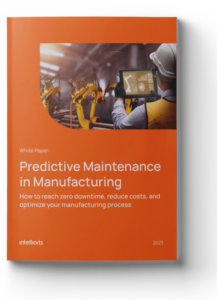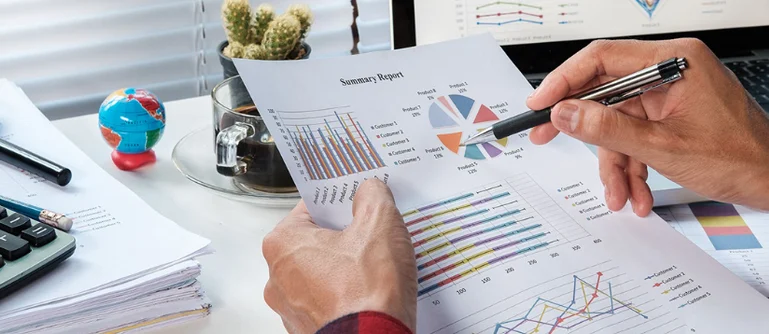In the modern-day environment, Large Language Models (LLMs) have emerged as transformative tools, reshaping how businesses interact with data and technology.
One of the applications of LLMs, Generative AI, is the fastest-growing category in the AI market. Evaluated at about $300 billion in 2023, it’s expected to have a value of $4.31 trillion by 2030. Statistics show the potential of the technology to transform business processes and add value.
In this post, you’ll discover the 11 best large language models you can potentially adopt and exploit in business processes in numerous ways.
11 best large language model solutions
Despite the LLMs becoming publicly available not so long ago, there is already quite an extensive range of options to try. Here are the 11 most widely used and capable large language model examples to consider using for business purposes.
GPT-4 (OpenAI)
GPT-4, developed by OpenAI, is a cutting-edge language model known for its deep learning capabilities. The model’s advanced natural language understanding and generation offer significant benefits like:
- High-quality text processing
- Contextually relevant outputs
- Efficient automation of text-based tasks
Common applications of this model are in customer service, research and science, and education.
You can discover more about document extraction with ChatGPT by Open AI in another of our blog posts.
LaMDA (Google AI)
Google AI’s LaMDA focuses on conversation-driven AI, adept at maintaining context over long dialogue sessions and spanning a broad range of conversational topics with a natural flow. Its key benefits include:
- Enhanced conversational abilities
- More natural user interactions
- Improved engagement in digital communications
LaMDA is commonly applied to chatbots, virtual assistants, and customer service interfaces.
LLaMA (Meta AI)
LLaMA from Meta AI is engineered for deep language analysis, capable of interpreting and processing intricate language structures and understanding subtle language nuances. Its strengths are:
- Processing complex language patterns
- Accurate sentiment analysis
- Efficient text summarization
Applications include sentiment analysis tools, text summarization platforms, and advanced language interpretation systems.
Bloom (BigScience)
As an open-source, collaborative initiative, Bloom is a multi-faceted language model that supports a wide array of languages and dialects, making it highly inclusive and versatile for global linguistic tasks. It’s notable for:
- Fostering innovation through collaboration
- Versatility in diverse language tasks
- Encouraging community-driven development
It is used in academic research, large-scale content generation, and collaborative AI projects.
PaLM (Google AI)
PaLM by Google AI specializes in multilingual processing, demonstrating strong capabilities in handling a variety of languages and dialects with advanced language comprehension and generation techniques. Its best features are:
- Handling intricate language nuances
- Robust multilingual capabilities
- Scalability in language processing
PaLM finds applications in translation services, creative writing, and multilingual content creation.
BARD (Google AI)
Focused on creativity and narrative, BARD is designed to excel in generating imaginative and engaging text, making it ideal for creative storytelling and content creation. It’s notable for:
- Novel narrative creation
- Engaging storytelling capabilities
- Creative content for marketing and scriptwriting
BARD is ideal for storytelling apps, marketing content tools, and scriptwriting software.
If you’re unsure where to start with using LLMs in your business environment, don’t hesitate to reach out to qualified AI and ML experts from Intelliarts.
Cohere (Cohere)
Cohere’s language model is designed for flexibility and ease of integration, making it a versatile choice for embedding advanced language understanding into a wide range of applications. It has to offer:
- Adaptable language processing
- User-friendly AI integration
- Automated customer support and content moderation
Cohere is commonly used in business tools for customer support automation and content moderation.
Claude v1 (Google AI)
Optimized for instantaneous responses and interactions, Claude v1 is particularly suited for real-time conversational AI, providing rapid and context-aware responses in dialogues. It features:
- Seamless, responsive dialogue
- Real-time interaction capabilities
- Enhanced user experiences in virtual assistance
It’s primarily applied to interactive chatbots, virtual assistants, and customer service platforms.
Megatron-Turing NLG (Google AI)
Megatron-Turing NLG, a collaborative effort between NVIDIA and Microsoft, this model is notable for its ability to process and analyze language at a large scale, handling extensive datasets with complex linguistic structures. It is known for:
- Handling large-scale language tasks
- Advanced research capabilities
- Sophisticated data analysis
Used predominantly in high-level research and complex language processing applications.
Wu Dao 2.0 (Baidu)
As a multimodal language model, Wu Dao 2.0 is unique in its capability to understand and generate both text and image data, making it suitable for a wide range of integrated multimodal applications. Its strengths are:
- Blending text and image understanding
- Versatility in visual-textual applications
- Applications in image captioning and virtual reality
This model is ideal for content creation involving both images and text, and in virtual reality applications.
Jurassic-1 Jumbo (Google AI)
Tailored for handling large and complex datasets in language processing, Jurassic-1 Jumbo excels in managing extensive linguistic tasks, offering robust capabilities in large-scale language comprehension and generation. Its benefits are:
- An extensive knowledge base for content generation
- High-quality, accurate text output
- Application across various domains
It’s used in automated content generation and data analysis platforms.
Interested in using a LLM in your project? Drop Intelliarts a line, and our engineers will propel you to success.
What are the benefits of using LLMs and their applications?
Using the capabilities of LLMs instead of human workers can bring businesses lots of advantages. Examples are provided in the below infographic:
Now, let’s get to know what business value you get by adopting LLMs, using the example of their applications:
1. Natural language understanding and processing
LLMs understand and interpret human language, allowing virtual assistants and chatbots to comprehend queries and commands. This leads to more human-like interactions where the user can speak or type naturally, as opposed to using rigid command-line instructions.
Examples: Virtual assistants and chatbots such as Apple’s Siri or Amazon’s Alexa.
Learn more about the role of natural language processing in business by reading another of our blog posts.
2. Text generation
LLMs can generate coherent and contextually relevant text based on prompts or data input. This capability is used for creating articles, reports, stories, and even programming code. It can augment human writing, help overcome writer’s block, or provide a starting point for creative work.
Examples: Content creation and automatic writing solutions such as Wordsmith by Automated Insights.
3. Language translation
LLMs can translate text between various languages, facilitating communication among people who don’t share a common language. This application is vital for global businesses, travel, and online communication.
Examples: Translation services like Google Translate, which supports over 100 languages.
4. Question answering
LLMs can parse information from provided data or the internet to answer questions on a wide range of topics. FAQ bots on websites use this to automatically provide answers to common customer inquiries without human intervention.
Examples: IBM Watson, as demonstrated in its performance on the Jeopardy! game show.
5. Sentiment analysis
LLMs can assess the sentiment of text data, such as determining whether social media posts or product reviews are positive, negative, or neutral. This is particularly useful for brands and organizations looking to gauge public opinion or customer satisfaction.
Examples: Tools like Brandwatch that analyze social media sentiment.
6. Text summarization
LLMs can condense long articles, reports, and documents into shorter summaries, highlighting key points and essential information. This is useful for professionals who need to quickly understand the substance of lengthy texts.
Examples: Summarization tools like SMMRY or SummarizeBot.
7. Content recommendations
By analyzing a user’s past behavior and preferences, LLMs can suggest relevant and personalized content. This technology powers recommendation engines on platforms like Netflix, Spotify, and news websites.
Examples: The recommendation algorithms used by Netflix to suggest movies and shows.
8. Speech recognition
When combined with speech recognition software, LLMs can transcribe spoken language into text. This technology underpins voice-activated assistants, transcription services, and real-time closed captioning.
Examples: Speech-to-text applications like Google’s Live Transcribe and Dragon NaturallySpeaking.
9. Language modeling
LLMs are trained on vast datasets to predict the probability of a sequence of words, which helps in correcting grammar, completing partial sentences, and improving the fluency of machine-generated text.
Examples: Writing assistance tools such as Grammarly.
Want to reap the benefits of large language models? Contact Intelliarts and let our team of AI engineers contribute to your best project.
What are the challenges of using LLMs?
As with any other technology, LLMs have their limitations, related to the nature of innovation and the way it’s utilized. Here are some of the common concerns and challenges of large language models and ways to address them:
1. Ethical concerns
What’s this? Even the best LLM models can propagate biases present in the training data and generate harmful or offensive content.
Solutions: Implement regular technical audits to find and address biases in language models, train with diverse datasets, and create strict ethical guidelines with an oversight committee to keep the use of language models in check.
2. Misinformation
What’s this? LLMs can produce factually incorrect information, leading to the spread of false information.
Solutions: Integrate fact-checking protocols and source-verification tools into the model’s output processes, and provide clear disclaimers about the potential for inaccuracies. Also, encourage user feedback to help identify and correct misinformation.
3. Data privacy
What’s this? LLMs might inadvertently expose sensitive or private information when generating text.
Solutions: Employ solid data anonymization techniques before training models, implement strict access controls, and use differential privacy to ensure individual data points are not traced back to the source.
4. Computational resources
What’s this? Training and running the best LLM solutions require substantial computational power, making them inaccessible to some companies.
Solutions: Optimize algorithms for efficiency, invest in more efficient hardware, and provide cloud-based access to democratize the availability of LLMs. Create shared resources or platforms where these models can be accessed rather than run by individuals.
5. Lack of common sense
What’s this? LLMs often struggle with common-sense reasoning, leading to nonsensical or incorrect responses.
Solutions: Incorporate hybrid models that combine machine learning with rule-based systems, improve the dataset to cover more common-sense scenarios, and continually update the model with new data that fills the common-sense gap.
6. Fine-tuning challenges
What’s this? Customizing LLMs for specific tasks can be complex and time-consuming.
Solutions: Develop user-friendly fine-tuning interfaces, create standardized fine-tuning datasets for various domains, and provide comprehensive guidelines and support for developers to fine-tune models effectively.
7. Energy consumption
What’s this? Running LLMs at scale can have a significant environmental impact due to high energy consumption.
Solutions: Advance in developing more energy-efficient machine learning algorithms, invest in renewable energy sources for data centers, and improve the energy efficiency of the hardware used.
8. Long-term dependencies
What’s this? LLMs have limitations in modeling and understanding long-term context.
Solutions: Enhance model architectures to better capture long-term dependencies, use techniques like attention mechanisms more effectively, and incorporate external memory aids that models can reference.
9. Fairness and inclusivity
What’s this? Ensuring fair and inclusive use of LLMs across various languages and demographics is an ongoing challenge.
Solutions: Design and train models with inclusivity as a core principle, ensure datasets have broad linguistic and cultural representation, and adjust algorithms to serve different languages and dialects fairly.
A trusted provider of AI and ML services can greatly assist your company by ensuring that the risks of negative effects from adopting LLMs in your business environment are minimized.
Final take
As we’ve explored, the potential of LLM is both diverse and valuable, offering numerous solutions tailored to various requirements. From the all-encompassing knowledge of GPT models to the specialized functionalities of industry-specific LLMs, the potential for innovation and efficiency is boundless. Use the provided list of large language models to guide your choice of an option that would benefit your business the most.
Selecting the right tech partner to help you implement an LLM in your digital infrastructure and make use of it is half the battle. Let the Intelliarts team make an impact on your project. With more than 24 years on the market delivering innovative solutions, our ML engineers will ensure that you stay ahead of the competition.
FAQ
Choose an LLM based on specific needs, dataset compatibility, computational resources, and the model’s performance metrics.
Best practices include ensuring data privacy, avoiding biases, promoting fairness and transparency, and respecting ethical guidelines.
As of our last update, GPT-4 was among the most powerful LLMs, known for its vast knowledge base, nuanced understanding, and advanced reasoning capabilities.











